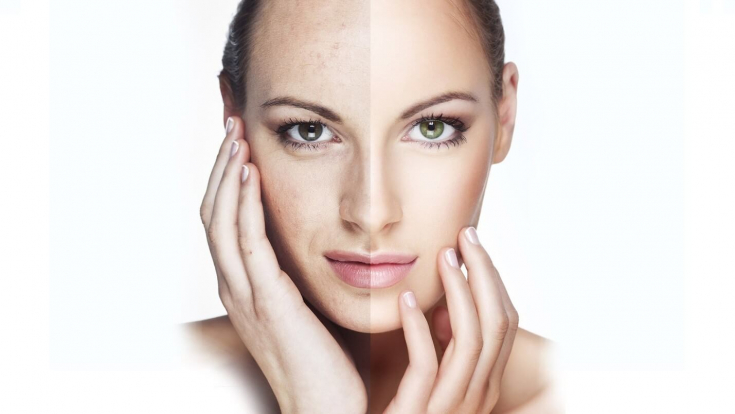Every person does not want to grow old, and also that the aging processes are invisible. But, the aging process is inevitable, and first of all it is visible in the condition of the skin.
Today, dermatologists and cosmetologists have developed many procedures and products to slow down aging and make the aging process on the skin less noticeable.
Laser skin rejuvenation is a versatile and effective way to combat the manifestations of skin aging.
Read more on estet-portal.com about the mechanism of laser rejuvenation effect on the skin.
- Laser Skin Rejuvenation Methods
- Mechanism of laser skin rejuvenation with ablative lasers
- Laser skin rejuvenation: technique and indicationsia
Methods of laser skin rejuvenation
In the laser skin rejuvenation procedure, the target chromophores, that is, targets, can be almost all components of the skin. These are collagen, melanin, water, hemoglobin.
For any type of skin aging, it is possible to choose an individual scheme for correcting involution processes in the skin, since laser exposure is selective.
The process of skin rejuvenation is achieved in two ways:
1. Ablation method - layer-by-layer skin removal;
2. Non-Ablative Method – achieved during the warming of the skin while maintaining its integrity. With this method, the laser beam can be distributed on the skin in two ways:
- first way – 100% coverage of the skin surface (non-ablative photothermolysis, classic ablation);
- the second method - fractionation of the laser beam into several hundred microbeams (fractional non-ablative photothermolysis, fractional ablation).
During the application of ablative and non-ablative methods of laser skin rejuvenation, the mechanism of action on it is different.
Let's consider in more detail the features of the operation of ablative laserss.
Skin Rejuvenation: The Benefits of Retinol Peeling
Mechanism of laser skin rejuvenation with ablative lasers
During the process of vaporization, that is, when the surface evaporation of the skin occurs, abnormal skin structures are removed – cicatricial deformities, keratosis, age spots, wrinkle smoothing.
When the tissue is exposed to high temperature from the laser, the process of stimulation of the release of growth factors occurs, and the damaged area is infiltrated by fibroblasts. This reaction is accompanied by an increase in the activity of the cellular elements of the dermis.
Collagen fibers are destroyed by fibroblasts by fibroplasia with the help of special enzymes (non-lysosomal neutral proteinases and collagenase).
Further, extracellular proteins are synthesized – collagen and elastin, which allows the dermal matrix to renew itself. After these processes, the skin is tightened by 20-25%.

During laser skin rejuvenation tissue water acts as an absorber, and all laser action processes with the skin are regulated by absorbing the water components of the dermis.
Carbon dioxide laser is more commonly used to resurface the skin.
Read more of our contents on Facebook!
Laser skin rejuvenation: technique and indications
Ultra-pulse and super-pulse lasers are suitable for laser skin rejuvenation.
Based on the principle of selective photothermolysis, the target cells are less heated provided that the thermal relaxation time (RTD) is longer than the duration of the laser pulse.
If the impulse exceeds the TRT, then this provokes excessive overheating of the tissues. TRT of water-containing tissues is 1 ms.
Thus, with a pulse duration of less than 1 ms, there is a rapid evaporation of the tissue. This leaves a very narrow area of thermal necrosis.
Indications for laser skin resurfacing:
- the presence of eyelid skin defects (pseudoblepharoplasty is being performed);
- age-related changes in the skin – loss of elasticity, wrinkles of varying severity and depth;
- photoaging of the skin types III-IV according to the Glogau scale;
- seborrheic and actinic keratosis;
- gravitational ptosis of the face.
CO2 laser skin resurfacing is more suitable for fair skinned patients who have severe static wrinkles and are between 40 and 65 years of age.
For younger patients with incipient signs of skin aging, laser skin rejuvenation is not recommended.
In such cases, it is better to use laser technologies, which are based on fractional exposure.
Carbon dioxide laser skin rejuvenation is not recommended for the décolleté, neck and back of the hands, as there is a risk of scarring.
Total facial rejuvenation: procedure algorithm







Add a comment